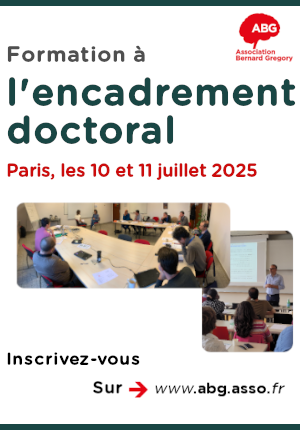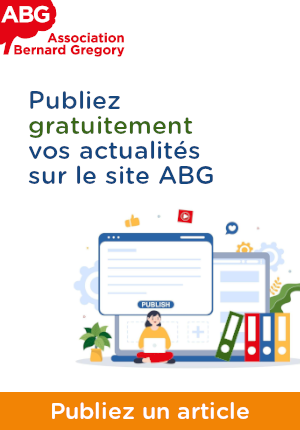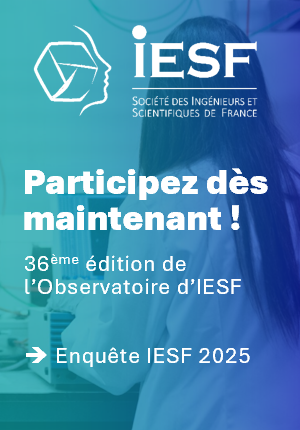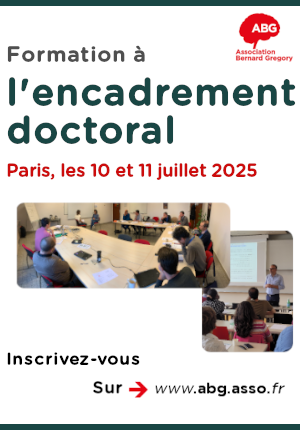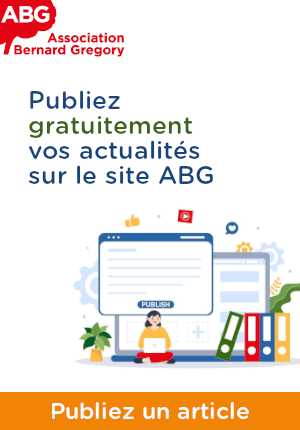Intersection algébrique sur les surfaces de translation et les surfaces hyperboliques // Algebraic interaction strength on translation surfaces and hyperbolic surfaces
|
ABG-131102
ADUM-64427 |
Sujet de Thèse | |
| 16/04/2025 | Contrat doctoral |
Université de Montpellier
MONTPELLIER CEDEX 5 - France
Intersection algébrique sur les surfaces de translation et les surfaces hyperboliques // Algebraic interaction strength on translation surfaces and hyperbolic surfaces
- Mathématiques
surface de translation, géométrie hyperbolique, intersection algébrique, disque de Teichmüller
translation surface, hyperbolic geometry, algebraic intersection strength, Teichmüller disc
translation surface, hyperbolic geometry, algebraic intersection strength, Teichmüller disc
Description du sujet
On considère une surface fermée $M$, c'est à dire une variété différentiable de dimension 2, compacte, sans bord. On suppose de plus $M$ orientée, c'est à dire qu'on peut y définir la gauche et la droite. On peut alors calculer l'intersection algébrique de deux courbes fermées $\alpha$ et $\beta$ tracées sur $M$ : on compte simplement les points d'intersection de $\alpha$ et $\beta$, avec un signe $+$ si au point considéré $\alpha$ traverse $\beta$ de la gauche vers la droite, et un signe $-$, sinon. Le premier fait remarquable de cette théorie est que l'intersection définit une forme bilinéaire antisymétrique non dégénérée, notée $\mbox{Int}(.,.)$ sur le premier groupe d'homologie de $M$. A partir de maintenant nous supposons que la surface $M$ est munie d'une métrique riemannienne $g$.
La question que nous nous posons est la suivante : imaginons qu'étant données deux courbes fermées $\alpha$ et $\beta$ tracées sur $M$, on gagne 1 franc pour chaque intersection avec un signe +, on perd un franc pour chaque intersection avec un signe $-$, et comme il faut bien payer l'essence, on dépense 1 centime par mètre parcouru sur $\alpha$, par mètre parcouru sur $\beta$. On se demande alors si l'affaire est rentable. En d'autres termes, on cherche à évaluer la quantité
\[
K(M,g)= \sup_{\alpha,\beta}\frac{\mbox{Int}(\alpha,\beta)}{l(\alpha)l(\beta)}.
\]
L'affaire est rentable si $K(M,g) >0$. Il est clair que c'est le cas car en échangeant si besoin est les places de $\alpha$ et $\beta$ on peut obtenir
$\mbox{Int}(\alpha,\beta)>0$. Ensuite on peut se demander si $K(M,g) < +\infty$, autrement dit, s'il y a une rentabilité maximale théorique. On peut voir que c'est le cas, en interprétant $K(M,g)$ comme la norme de la forme bilinéaire $\mbox{Int}(.,.)$, relativement à une norme sur l'homologie de $M$, qui mesure en quelque sorte la longueur d'une classe d'homologie pour la métrique $g$.
Dans l'article [Massart-Muetzel '14] on étudie le comportement de $K(M,g)$, vu comme fonction sur l'espace des modules des surfaces hyperboliques de genre fixé. L'article [Massart-Muetzel '14] se concentre sur le comportement à l'infini dans l'espace des modules, et montre en particulier que $K(M,g)$ n'a pas de maximum sur l'espace des modules. Un but, parmi d'autres, de la présente thèse est de rechercher l'éventuel minimum de $K(M,g)$, dans le cas particulier des surfaces de translation, et des surfaces hyperboliques, de genre $2$.
------------------------------------------------------------------------------------------------------------------------------------------------------------------------
------------------------------------------------------------------------------------------------------------------------------------------------------------------------
We consider a closed surface 𝑀, that is, a 2-dimensional differentiable manifold, compact and without boundary. Moreover, we assume that 𝑀 is oriented, meaning that one can define left and right on it. We can then calculate the algebraic intersection of two closed curves
𝛼 and 𝛽 drawn on 𝑀: we simply count the intersection points of 𝛼 and 𝛽, with a positive sign if at the considered point 𝛼 crosses 𝛽 from left to right, and a negative sign otherwise. The first remarkable fact of this theory is that the intersection defines a non-degenerate antisymmetric bilinear form, denoted
Int(.,.), on the first homology group of 𝑀. From now on, we assume that the surface 𝑀 is equipped with a Riemannian metric 𝑔.
The question we ask is as follows: imagine that, given two closed curves 𝛼 and 𝛽 drawn on 𝑀, one earns 1 euro for each intersection with a positive sign, loses 1 euro for each intersection with a negative sign, and, since one has to pay for gas, spends 1 cent per meter traveled on 𝛼 and per meter traveled on 𝛽. We then wonder if the deal is profitable. In other words, we seek to evaluate the quantity
𝐾(𝑀,𝑔)=sup_𝛼,𝛽 Int(𝛼,𝛽) / 𝑙(𝛼)𝑙(𝛽), which we call algebraic interaction strength after [Torkaman '23] and [Jiang-Pan, '24].
The deal is profitable if 𝐾(𝑀,𝑔)>0. It is clear that this is the case because by swapping the roles of 𝛼 and 𝛽 if necessary, one can achieve
Int(𝛼,𝛽)>0. Next, one might ask if 𝐾(𝑀,𝑔)<+∞, in other words, if there is a theoretical maximum profitability. It can be shown that this is indeed the case by interpreting 𝐾(𝑀,𝑔) as the norm of the bilinear form Int(.,.), with respect to a norm on the homology of 𝑀, which roughly measures the length of a homology class for the metric 𝑔.
In the article [Massart-Muetzel '14], the behavior of 𝐾(𝑀,𝑔) is studied as a function on the moduli space of hyperbolic surfaces of fixed genus. The article [Massart-Muetzel '14] focuses on the behavior at infinity in the moduli space, and in particular shows that 𝐾(𝑀,𝑔) does not have a maximum on the moduli space. One goal, among others, of this thesis is to investigate the potential minimum of 𝐾(𝑀,𝑔), in the special case of translation surfaces and hyperbolic surfaces of genus 2.
------------------------------------------------------------------------------------------------------------------------------------------------------------------------
------------------------------------------------------------------------------------------------------------------------------------------------------------------------
Début de la thèse : 01/10/2025
La question que nous nous posons est la suivante : imaginons qu'étant données deux courbes fermées $\alpha$ et $\beta$ tracées sur $M$, on gagne 1 franc pour chaque intersection avec un signe +, on perd un franc pour chaque intersection avec un signe $-$, et comme il faut bien payer l'essence, on dépense 1 centime par mètre parcouru sur $\alpha$, par mètre parcouru sur $\beta$. On se demande alors si l'affaire est rentable. En d'autres termes, on cherche à évaluer la quantité
\[
K(M,g)= \sup_{\alpha,\beta}\frac{\mbox{Int}(\alpha,\beta)}{l(\alpha)l(\beta)}.
\]
L'affaire est rentable si $K(M,g) >0$. Il est clair que c'est le cas car en échangeant si besoin est les places de $\alpha$ et $\beta$ on peut obtenir
$\mbox{Int}(\alpha,\beta)>0$. Ensuite on peut se demander si $K(M,g) < +\infty$, autrement dit, s'il y a une rentabilité maximale théorique. On peut voir que c'est le cas, en interprétant $K(M,g)$ comme la norme de la forme bilinéaire $\mbox{Int}(.,.)$, relativement à une norme sur l'homologie de $M$, qui mesure en quelque sorte la longueur d'une classe d'homologie pour la métrique $g$.
Dans l'article [Massart-Muetzel '14] on étudie le comportement de $K(M,g)$, vu comme fonction sur l'espace des modules des surfaces hyperboliques de genre fixé. L'article [Massart-Muetzel '14] se concentre sur le comportement à l'infini dans l'espace des modules, et montre en particulier que $K(M,g)$ n'a pas de maximum sur l'espace des modules. Un but, parmi d'autres, de la présente thèse est de rechercher l'éventuel minimum de $K(M,g)$, dans le cas particulier des surfaces de translation, et des surfaces hyperboliques, de genre $2$.
------------------------------------------------------------------------------------------------------------------------------------------------------------------------
------------------------------------------------------------------------------------------------------------------------------------------------------------------------
We consider a closed surface 𝑀, that is, a 2-dimensional differentiable manifold, compact and without boundary. Moreover, we assume that 𝑀 is oriented, meaning that one can define left and right on it. We can then calculate the algebraic intersection of two closed curves
𝛼 and 𝛽 drawn on 𝑀: we simply count the intersection points of 𝛼 and 𝛽, with a positive sign if at the considered point 𝛼 crosses 𝛽 from left to right, and a negative sign otherwise. The first remarkable fact of this theory is that the intersection defines a non-degenerate antisymmetric bilinear form, denoted
Int(.,.), on the first homology group of 𝑀. From now on, we assume that the surface 𝑀 is equipped with a Riemannian metric 𝑔.
The question we ask is as follows: imagine that, given two closed curves 𝛼 and 𝛽 drawn on 𝑀, one earns 1 euro for each intersection with a positive sign, loses 1 euro for each intersection with a negative sign, and, since one has to pay for gas, spends 1 cent per meter traveled on 𝛼 and per meter traveled on 𝛽. We then wonder if the deal is profitable. In other words, we seek to evaluate the quantity
𝐾(𝑀,𝑔)=sup_𝛼,𝛽 Int(𝛼,𝛽) / 𝑙(𝛼)𝑙(𝛽), which we call algebraic interaction strength after [Torkaman '23] and [Jiang-Pan, '24].
The deal is profitable if 𝐾(𝑀,𝑔)>0. It is clear that this is the case because by swapping the roles of 𝛼 and 𝛽 if necessary, one can achieve
Int(𝛼,𝛽)>0. Next, one might ask if 𝐾(𝑀,𝑔)<+∞, in other words, if there is a theoretical maximum profitability. It can be shown that this is indeed the case by interpreting 𝐾(𝑀,𝑔) as the norm of the bilinear form Int(.,.), with respect to a norm on the homology of 𝑀, which roughly measures the length of a homology class for the metric 𝑔.
In the article [Massart-Muetzel '14], the behavior of 𝐾(𝑀,𝑔) is studied as a function on the moduli space of hyperbolic surfaces of fixed genus. The article [Massart-Muetzel '14] focuses on the behavior at infinity in the moduli space, and in particular shows that 𝐾(𝑀,𝑔) does not have a maximum on the moduli space. One goal, among others, of this thesis is to investigate the potential minimum of 𝐾(𝑀,𝑔), in the special case of translation surfaces and hyperbolic surfaces of genus 2.
------------------------------------------------------------------------------------------------------------------------------------------------------------------------
------------------------------------------------------------------------------------------------------------------------------------------------------------------------
Début de la thèse : 01/10/2025
Nature du financement
Contrat doctoral
Précisions sur le financement
Concours pour un contrat doctoral
Présentation établissement et labo d'accueil
Université de Montpellier
Etablissement délivrant le doctorat
Université de Montpellier
Ecole doctorale
166 I2S - Information, Structures, Systèmes
Profil du candidat
Etudiant de M2 spécialisé en géométrie/systèmes dynamiques. Solides bases en dynamique de Teichmüller et surfaces de translation. Base de géométrie hyperbolique.
Master degree with emphasis on geometry/dynamical systems. Good understanding of Teichmüller dynamics and translation surfaces. Some knowledge of hyperbolic geometry.
Master degree with emphasis on geometry/dynamical systems. Good understanding of Teichmüller dynamics and translation surfaces. Some knowledge of hyperbolic geometry.
04/05/2025
Postuler
Fermer
Vous avez déjà un compte ?
Nouvel utilisateur ?
Besoin d'informations sur l'ABG ?
Vous souhaitez recevoir nos infolettres ?
Découvrez nos adhérents
 CESI
CESI  Nokia Bell Labs France
Nokia Bell Labs France  ONERA - The French Aerospace Lab
ONERA - The French Aerospace Lab  Institut Sup'biotech de Paris
Institut Sup'biotech de Paris  Généthon
Généthon  SUEZ
SUEZ  Groupe AFNOR - Association française de normalisation
Groupe AFNOR - Association française de normalisation  Ifremer
Ifremer  Aérocentre, Pôle d'excellence régional
Aérocentre, Pôle d'excellence régional  CASDEN
CASDEN  Laboratoire National de Métrologie et d'Essais - LNE
Laboratoire National de Métrologie et d'Essais - LNE 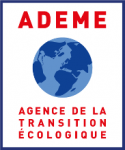 ADEME
ADEME  ASNR - Autorité de sûreté nucléaire et de radioprotection - Siège
ASNR - Autorité de sûreté nucléaire et de radioprotection - Siège  MabDesign
MabDesign 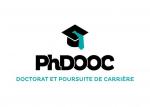 PhDOOC
PhDOOC  MabDesign
MabDesign 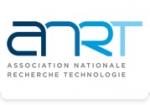 ANRT
ANRT 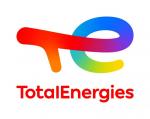 TotalEnergies
TotalEnergies  Tecknowmetrix
Tecknowmetrix

